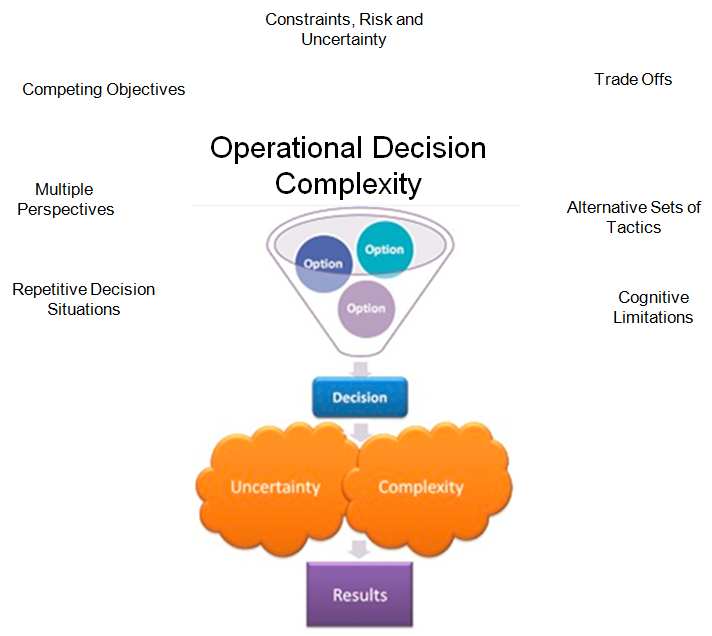

We are a boutique SAP consulting company and a system integrator that specializes in embedding top-line tactics into our clients’ SAP processes. We have been ardent proponents of Revenue Management for over a decade. We strive for orienting enterprises towards revenue maximization. This is our core competency. Helping businesses thrive through Operations-Centric Revenue Management is what Top-line Tactics is all about. We do this by implementing an Independent Software Vendor’s SAP add-on solution called FOO – Fulfillment Operations Optimizer and by integrating it with SAP ECC.
Throttleable (erstwhile Real Value IT LLC) makes Operations-Centric Revenue Management applications for manufacturing, distribution and service industries. Their indefatigable persistence for over a decade has yielded an innovation. FOO – Fulfillment Operations Optimizer is a product of Real Value IT LLC. Visit them at http://throttleable.com/. FOO has three main application components – ARTHA Ops, ARTHA Sales and ERD. ARTHA Ops stands for Additional Revenues Through Heuristics and Algorithms in Operations. ARTHA Sales Stands for Additional Revenues Through Heuristics and Algorithms in Sales and ERD stands for Enterprise Revenue Dynamics.

Fulfillment Operations Optimizer can be a compelling differentiator for an enterprise. Built into this application are the features that contribute to consistent growth and a monitoring mechanism that senses inconsistencies in growth. FOO helps make several recourse decisions to prevent or minimize revenue losses. Rash operational decisions contribute to significant losses in revenue. Fulfillment operations optimizer has an operational decision support system that plugs revenue leaks.

Range of decisions the typical operational user has to make in a day are varied and numerous. Operations-Centric revenue management primarily focuses on the typical problems the operational users face in their daily business. Events in the supply chain cannot be entirely foreseen and are made up of so many particulars for a human to effectively process in real time.
Uncertainty and disruptions are inherent in every aspect of business – demand can never be forecast accurately, Transit times can never be certain, machines and vehicles can break down, employees can go on unplanned vacation, demand in certain markets in relation to supplier capacity can change over time, delivery lead times, manufacturing yield, transportation times, component availability – all have a certain amount of uncertainty that needs to be dealt with day in and day out. Things happen so fast in operations. Before you can act on situation A, B has appeared, and C already visible in the distance. The pace of events is so fast that unless we have some system to keep track of and see the relationship of all those things, it is difficult to reach the end goal.
This entails a number of operational decisions to be made almost on a daily basis. What operational action or decision is appropriate for a particular situation to ensure that no loss of revenue occurs requires a sophisticated Operations-Centric Revenue Management application system like Real Value IT’s Fulfillment Operations Optimizer.
OCRM also deals with certain tactical decision support for revenue maximization: What kind of segmentation mechanisms to use? What terms of trade to offer, when and what products should be combined as bundled offerings, how to price across product categories, how to change price over time, when to mark down? When to mark up? When to accept or reject an offer to buy? How to allocate capacity across different product segments? When to temporarily withhold a product from a certain market segment to sell to a different one? Which of these decisions are significant differs from business context to business context. Tackling the operational decision maze day in day out is no easy feat. What kind of top-line growth is worth pursuing and what kind is not in itself is a big challenge – when this decision needs to be made based on both short term and long term revenue implications? These are the type of problems that we solve through implementation of OCRM.
We help our clients achieve this objective of moving from current state of making operational business decisions with a focus on cost to a state of making operational decisions based on revenue implications too. Operational decisions so made, are also broadcast to appropriate levels of management as well to maintain sufficient oversight. Each functional area will have a throughput gauge that indicates the expected throughput in terms of clearly defined functional area specific performance metrics as well as a pointer to actual throughput and when the pointer is above or below the specified tolerance, system draws management’s attention to it and also operational circumstances contributing to the deviation, the business users logged. Analytics component provides further insights for validation. Key aspect of this is the pursuit of revenue maximization not as a mega strategy but as a daily do.